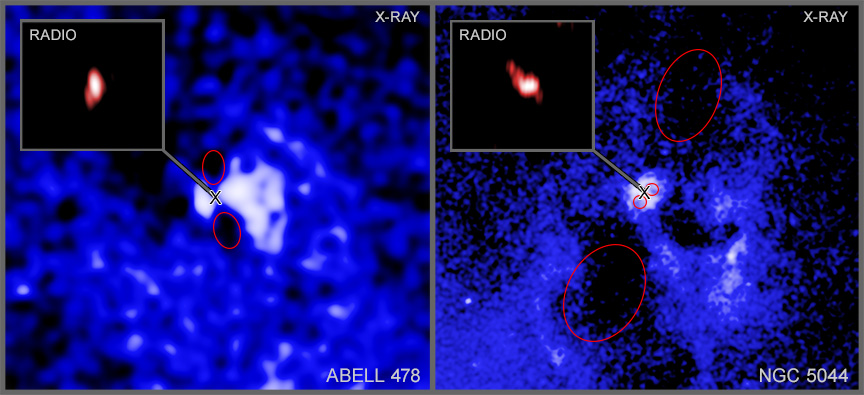AUI will present at the 247th meeting of the American Astronomical Society in Phoenix from January 4-8.
Recent News
ALMA Helps Unmask Monster Black Hole Behind Record-Breaking Cosmic Burst
Astronomers have used the Atacama Large Millimeter/submillimeter Array (ALMA) together with a suite of space- and ground-based telescopes, to study AT 2024wpp, the most luminous fast blue optical transient (LFBOT) ever observed.
Astronomers Make First Radio Detection of Rare Supernova Type, Revealing Secrets of Stellar Death
Astronomers using the U.S. National Science Foundation Very Large Array have captured the first-ever radio signals from a rare class of stellar explosion known as a Type Ibn supernova.
Spotted: ‘Death Star’ Black Holes in Action

Huge black holes are firing powerful beams of particles into space — and then changing their aim to fire at new targets. This discovery, made using NASA’s Chandra X-ray Observatory and the U.S. National Science Foundation (NSF) National Radio Astronomy Observatory’s (NRAO) Very Long Baseline Array (VLBA), shows what kind of widespread impact black holes can have on their surrounding galaxy and beyond.
A team of astronomers looked at 16 supermassive black holes in galaxies surrounded by hot gas detected in X-rays by Chandra. Using radio data from the VLBA, operated by the National Radio Astronomy Observatory, they studied the directions of beams — also known as jets — of particles fired a few light-years away from the black holes. This gives the scientists a picture of where each beam is currently pointed, as seen from Earth. Each black hole fires two beams in opposite directions.
The team then used Chandra data to study pairs of cavities, or bubbles, in the hot gas that were created in the past by the beams pushing gas outwards. The locations of large outer cavities indicate the direction those beams pointed millions of years earlier. The researchers then compared the directions of the radio beams with the directions of the pairs of cavities. Read the full release.
This news article was originally published on the NRAO website on May 22, 2024.
Recent News
AUI to Attend AAS 247 Conference
AUI will present at the 247th meeting of the American Astronomical Society in Phoenix from January 4-8.
ALMA Helps Unmask Monster Black Hole Behind Record-Breaking Cosmic Burst
Astronomers have used the Atacama Large Millimeter/submillimeter Array (ALMA) together with a suite of space- and ground-based telescopes, to study AT 2024wpp, the most luminous fast blue optical transient (LFBOT) ever observed.
Astronomers Make First Radio Detection of Rare Supernova Type, Revealing Secrets of Stellar Death
Astronomers using the U.S. National Science Foundation Very Large Array have captured the first-ever radio signals from a rare class of stellar explosion known as a Type Ibn supernova.
